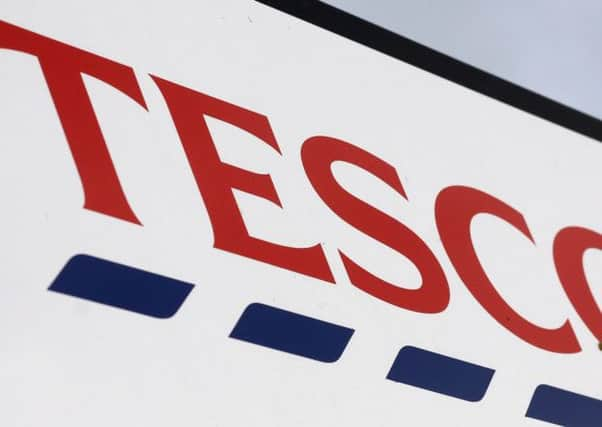Tesco shoppers flock back under new boss


New CEO Dave Lewis has overseen a 0.3 per cent increase in sales in the 12 weeks to February 1 and the group has attracted an additional 236,000 shoppers into its stores, according to the latest data from Kantar Worldpanel.
The rise has come at Leeds-based Asda’s cost. Asda regained the number two position from Sainsbury’s over the period, but its sales fell 1.7 per cent, the biggest fall out of the top four supermarkets.
Advertisement
Hide AdAdvertisement
Hide AdFraser McKevitt, head of retail and consumer insight at Kantar Worldpanel, said that as the second biggest player, Asda is losing out to a resurgent Tesco.
“I think Asda’s problem is the big four. Tesco is doing a bit better so Asda is very much in the firing line. The relationship between Tesco and Asda shoppers is strong so more shoppers at Tesco means less at Asda.”
Analyst Clive Black at Shore Capital said: “Asda’s slowdown in trading momentum over the last three to six months has surprised us and suggests to our minds that a combination of the improving momentum at Tesco and Morrisons is impinging upon its performance.”
Morrisons’ sales fell by 0.4 per cent, the best performance from the Bradford-based retailer since December 2013.
Advertisement
Hide AdAdvertisement
Hide AdAsked if this means the company is recovering, Mr McKevitt said the comparisons are flattering as Morrisons went through a very poor Christmas and new year last year.
“Unlike Tesco, Morrisons is not seeing shoppers returning. They are not adding any more customers.”
The last of the big four, Sainsbury’s, saw sales fall 1.0 per cent which Mr McKevitt blamed on recent price cuts as Sainsbury’s slashes prices in an attempt to compete with its three main rivals, which are seen as cheaper.
Discounters Aldi and Lidl saw impressive growth, up 21.2 per cent and 14.2 per cent respectively, but this was down from stellar growth rates of 36 per cent for Aldi in April 2014 and 24 per cent for Lidl in May 2014.
Advertisement
Hide AdAdvertisement
Hide Ad“The discounters are down from the stellar growth rates seen last year, but they’re still going pretty strongly. You can’t expect growth in the high 20s and 30s. Growth will slow to perhaps 10 to 15 per cent, but they’ll still take market share,” said Mr McKevitt.
“Things are cooling off a bit, but the wheels have not fallen off the discounter bandwagon yet.”
Kantar said that underlying grocery prices fell by 1.2 per cent in the 12 weeks to February 1, saving Britain’s shoppers £327m, driven by falling commodity prices in vegetables, milk and bread.
At the same time the grocery market grew at a rate of 1.1 per cent, the fastest since June 2014.
Advertisement
Hide AdAdvertisement
Hide AdKantar said that shoppers are taking advantage of lower fuel prices and the supermarket price war to increase their grocery spending.
“We are seeing definite growth in what people put in their basket. We saw it at Christmas and it’s continued into the February data. We are seeing a classic response when prices go down, people buy a bit more,” said Mr McKevitt.